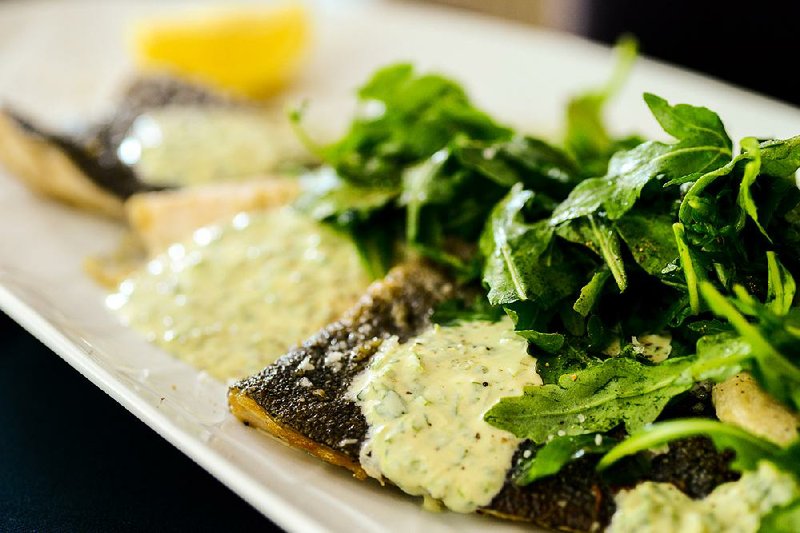When I whisk garlic into yogurt, I'm hardly a renegade. After all, the two foods pair frequently in such dishes as Greek tzatziki and Turkish ali nazik kebab, char-grilled eggplant and lamb sauced with garlicky yogurt. And garlic isn't the only yogurt booster, of course. In Lebanon, labneh -- that super-strained, lightly salted version -- gets dusted with zaatar and drizzled with olive oil, no sugar bowl in sight. In South Asia, roasted cumin is as common a feature in the region's raitas as it is in its cooling, savory lassis.
In many countries, yogurt is offered without any embellishment whatsoever. It's an elemental component, presented on the table in as straightforward a manner as a salad or a loaf of bread. When Mollie Katzen, the celebrated Berkeley, Calif.-based cookbook author, lived on a kibbutz in Israel in the late 1960s, she said yogurt was present every time a dairy meal was served. "There were eggs," she said, "and there was yogurt. It was a basic food group, a basic sustenance. It was real." Today, Katzen calls plain yogurt "the perfect food."
After years of sugaring our yogurt and teaming it not just with sweet fruit but also with actual candy (have you been to a frozen yogurt shop lately?), we Americans are finally waking up to what the rest of the world has known for eons: that yogurt needn't be sweet to appeal. It can taste salty, or spicy, or garlicky, or just plain sour, like the fermented milk that it is. It can taste, in other words, like yogurt.
In New York, for example, you'll find shallot yogurt from a small company called the White Moustache, whose owner has Persian roots, and a lightly salted yogurt (in Original and Tangy flavors) from Sohha Savory Yogurt, whose co-owner hails from Lebanon.
The grocery store dairy aisle might soon reflect that shift as well. According to a 2014 report by market research firm Mintel, "While the majority of leading yogurt flavors are sweet, the spread of savory offerings at food service and retail may portend the next shift in the category." Examples include Dannon's Oikos Greek Yogurt Dips in French onion, cucumber dill, roasted red pepper and vegetable herb, and Blue Hill Yogurt's vegetable-flavored varieties such as parsnip and beet. This evolution of the category, the report states, expands the times of day when consumers turn to yogurt (beyond breakfast, in other words) and attracts potential new buyers.
Despite our nation's collective (if slowly abating) sweet tooth, health is a big driver among yogurt consumers. In the report, Mintel food and drink analyst Beth Bloom writes: "The largest percentage of yogurt and yogurt drink users do so for health reasons. Some 44 percent say they use products in the category because they are healthier than other options."
Whether for its high protein content (with Greek yogurt and Icelandic skyr especially rich sources), considerable calcium or health-promoting probiotics -- whose wide-ranging benefits are increasingly well-documented but still coupled with perhaps overly fervid marketing -- yogurt will continue to dominate the snack aisle as a worthwhile option for those who seek a readily available source of nutrients and energy. Decoupling it from reams of added sugar would seem a logical next step, and one we might finally be inching toward.
That yogurt is finally getting its due for its unparalleled versatility in the savory realm is a welcome development, whether it's mixed into rice to finish an Indian meal, whisked into dips sprinkled lightly with sumac or napped over fish, meat or vegetables.
I, for one, couldn't be more pleased.
The inspiration for this dish comes from Serbian native Svetlana Watkins, who learned how to substitute sorrel leaves for the traditional grape leaves used in stuffed-greens recipes in Greece and Turkey.
Here, chard bundles are treated to hints of paprika and cinnamon, in the filling and in the cooking liquid.
Beef-Stuffed Swiss Chard Rolls With Yogurt Sauce
1 1/2 cups plain whole-milk or low-fat yogurt (not Greek)
10 large Swiss chard leaves
2 teaspoons extra-virgin olive oil
1/2 medium onion, cut into small dice
1 pound lean ground beef
1 tablespoon tomato paste
4 teaspoons sweet paprika, divided use
1/2 teaspoon ground cinnamon
1 3/4 teaspoons kosher salt, divided use
3/4 teaspoon ground black pepper, divided use
Place the yogurt in a medium bowl and keep it at room temperature until ready to serve.
Swish the chard leaves in a large bowl of cool water to clean them; pat dry. Fold each leaf in half lengthwise and slice out the bottom and central portions of the stem, working from the center of the leaf downward. (You want the two halves to stay connected up top.) When unfolded, each leaf should look like an upside-down V. Finely chop the stems you just removed.
Make the filling: Heat the oil in a large skillet over medium heat. Cook the chard stems and onion until tender, about 10 minutes, adding 1 tablespoon of water if the skillet runs dry. Add the beef, tomato paste, 3 teaspoons of the paprika, the cinnamon, 11/2 teaspoons of the salt and 1/2 teaspoon of the pepper. Increase heat to medium-high; cook until beef is no longer pink, breaking it up as it cooks, about 5 minutes. Remove from heat.
Work with one chard leaf at a time. Lay a leaf on a work surface, positioning it with the slit ends at the top, so it now resembles a regular V. The bumpy side of the leaf should face down and the concave part should face up. Scoop 1/4 to 1/3 cup of filling onto the leaf near the bottom, then tightly roll it up burrito style, pushing in the sides and forcing the slit top together as you encase the filling. Tuck back any filling that pops out. Transfer the packet to the skillet, placing it seam side down next to the remaining filling. Repeat with the remaining chard leaves and filling.
In a small bowl, combine the remaining 1 teaspoon of paprika and the remaining 1/4 teaspoon each of salt and pepper with 2/3 cup of water; pour it into the skillet around the rolls. Bring the liquid barely to a boil over medium heat, then cover the skillet, reduce the heat to medium-low and cook until the rolls are tender, 20 to 25 minutes.
Use a slotted spoon to transfer the rolls to a platter. Whisk the yogurt vigorously, then spoon it over the rolls. Serve.
Makes 4 to 5 servings.
Here, tahini brings complexity to a lemon-yogurt sauce for crispy fish filets. This is quick-fix weeknight fare, casual and gloriously messy.
You might have leftover sauce, which can be refrigerated in an airtight container for up to 2 days; it will thicken when chilled, so you may wish to stir in lemon juice or water as needed.
Trout With Tahini-Lemon Yogurt and Baby Arugula
1/2 cup plain yogurt (not Greek), preferably whole-milk
3 tablespoons tahini
3 to 4 tablespoons fresh lemon juice
1/2 cup loosely packed flat-leaf parsley, minced
1 clove garlic, grated
1/2 teaspoon kosher salt, plus more as needed
1/4 teaspoon ground black pepper, plus more as needed
6 cups loosely packed baby arugula
1 tablespoon extra-virgin olive oil
1 1/2 teaspoons fresh lemon juice
4 to 6 skin-on trout filets, pin bones removed (1 3/4 to 2 pounds total)
2 tablespoons PLUS 2 teaspoons extra-virgin olive oil, and more for optional drizzling
2 teaspoons unsalted butter
Lemon wedges, for serving
Whisk together the yogurt, tahini, 3 tablespoons of the lemon juice, 1 tablespoon water, the parsley, garlic, salt and pepper in a medium bowl, until smooth. Taste, adding up to 1 tablespoon more lemon juice, if desired.
Toss the arugula in a large bowl with the oil and lemon juice. Season lightly with salt and pepper.
Arrange the fish on pieces of parchment paper or aluminum foil. Drizzle both sides of the fish with oil (using 2 teaspoons total) and season lightly with salt and pepper.
Heat a large cast-iron skillet over medium-high heat. Work in two batches: Add 1 teaspoon of the butter and 1 tablespoon of the oil to the skillet. Once the butter foams and the oil starts to shimmer, add 2 or 3 trout filets skin side down. Cook for 3 to 4 minutes, until the underside is crisp. Turn them over and cook for 2 to 3 minutes, just until the flesh is opaque and flaky. Transfer to a large platter and tent with foil to keep warm.
Repeat with the remaining butter, oil and trout.
Spoon some sauce over each serving of trout, then pile some of the salad right on top. If desired, drizzle with oil and sprinkle with salt and cracked pepper. Serve with lemon wedges.
Makes 4 servings.
Yogurt in the dough makes for tender, chewy flatbreads. Griddling them in a bit of coconut oil adds flavor and crispness. And the accompanying spread is hard to beat.
Raisin-Poppy Seed Flatbreads With Cardamom-Honey Butter
6 tablespoons unsalted butter, at room temperature
1 tablespoon honey
1/4 teaspoon ground cardamom
1 tablespoon PLUS a pinch kosher salt, divided use
1/4 cup golden raisins, coarsely chopped
Boiling-hot water
1/4 cup warm water (about 100 degrees)
2 1/4 teaspoons (1 packet) active dry yeast
1/2 cup plain low-fat or whole-milk yogurt (not Greek), at room temperature
1/4 cup honey
1 1/2 cups all-purpose flour, plus more as needed
3/4 cup whole-wheat flour
3 tablespoons poppy seeds
2 to 4 tablespoons coconut oil or butter, melted, for brushing
For the cardamom-honey butter: Whisk together the butter, honey, cardamom and a pinch of salt in a small bowl until smooth. Cover and let it sit at room temperature.
For the dough: Place the raisins in a small bowl; add enough just-boiled water to barely cover. Let sit until needed.
Meanwhile, pour the 1/4 cup of warm water into a mixing bowl. Sprinkle with the yeast, stir to moisten and let stand for 5 minutes, until foamy. Whisk in yogurt and honey.
Lightly flour a work surface.
Drain the raisins, reserving the liquid; pat dry. Add them to the yeast mixture along with the all-purpose flour, whole-wheat flour, poppy seeds and salt, stirring to form a dough. (If the dough is too dry to come together, add a few teaspoons of the reserved raisin liquid.) Turn the dough out onto the floured work surface and knead until smooth, 3 to 5 minutes. Transfer to a greased bowl, cover with plastic wrap and let rise in a warm spot for 2 hours, until slightly puffed. (The dough will not double.)
Return the dough to the floured surface and cut it into 8 equal wedges. Working with one wedge at a time (keep the rest covered), roll it into a ball, then use a rolling pin to roll it into a 6-inch round.
Heat a cast-iron skillet over medium-high heat. After a minute or two, once a drop of water on the skillet sizzles and evaporates, brush the skillet with a little of the oil. Place the dough round at the center; cook until the underside is golden brown in spots, 1 to 2 minutes. Brush the top with a little oil, then turn the flatbread over and cook for 1 to 2 minutes, until browned on the second side.
Transfer the flatbread to a clean kitchen towel; wrap to keep it warm. Repeat the cooking, brushing with oil as needed, to cook all the flatbreads. Stack them on top of each other and keep them wrapped in the towel as you work.
Serve warm, with the cardamom-honey butter.
Makes 8 flatbreads.
Cheryl Sternman Rule is the author of Yogurt Culture: A Global Look at How to Make, Bake, Sip, and Chill the World's Creamiest, Healthiest Food (Houghton Mifflin Harcourt, 2015) and the founder of Team Yogurt (www.teamyogurt.com).
Food on 05/27/2015



